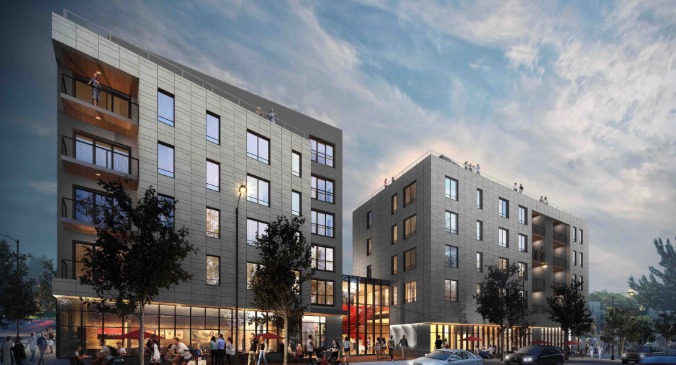With concessions rapidly burning off, asking rents are expected to increase this year 3.2 percent in Austin and Houston, 3 percent in San Antonio and 2.7 percent in Dallas/Ft. Worth.
Lured by the promise of above-average returns, investors from higher- priced coastal markets and developers from around the country are taking their money to the Lone Star State. Texas’ lack of zoning requirements allows developers to move from conception to completion in 18 to 24 months and, although today’s higher land costs are helping to keep activity below that of previous boom times, the pipeline is filling up with a long list of projects by national developers building mostly within the inner loop sub-markets of Texas’ major metros.
Spencer Stuart, senior VP and partner with Legacy Partners’ Texas office, is betting Texas has four or five more years of good growth, which he plans to capitalize on with infill development and acquisition of well-located suburban assets for repositioning in Dallas, Austin and Houston. Last year, the company acquired the 2,044- unit Riata in Austin with equity partner Capmark Financial and plans to build up to 306 units in another phase sometime in the future.
Legacy opened its Dallas office in 2004, early enough to have five projects with a total of 1,314 units in development today — one each in Houston and Austin and three in various Dallas submarkets. Stuart is in negotiations for more land on which to build Legacy’s typical high-density podium and wrap-style projects that use concrete and steel, materials that cost much more than the wood used to build garden-style. “Because our costs are higher, we gravitate to markets where incomes are high and residents can afford the luxury of living close to jobs,” said Stuart, adding that sluggish occupancy in some outer sub-markets hasn’t allowed for rent growth. As some Hurricane Katrina victims continue to move elsewhere, occupancy in those markets will see further declines.
“You need rents of $1.10 to $1.20 per square foot today to build a garden and offset the cost of land, which has been driven up by for- sale builders. In urban areas, we could build a heck of a project on four acres. But for a garden, you need 15 or 20 acres or more, depending on the density the city will allow,” he said. Legacy is developing one garden-style property, the 250-unit Kia Ora Park, on 15 acres in Dallas’ Plano submarket. Kia Ora means welcome in the language of New Zealand’s native Maori people and architectural themes from that culture will be evident in all aspects of the community.
Among Legacy’s current projects are The Venue, which includes 285 apartments and some ground-floor retail, and is located within walking distance of the DART light-rail station in the Telecomm Corridor of Richardson; the 258-unit Delano, nearing completion on 4.3 acres fronting on a future light rail line in Las Colinas, a city within the city of Irving, which itself is a sub-market of Dallas, and two skyscrapers — the 31-story, 187-unit Legacy at Town Lake in Austin’s Rainey Street area and the 25-story, 334-unit Legacy at Memorial in Houston’s Memorial sub-market. Legacy at Town Lake will be the first rental project in that area, which is dominated by condos.
The Morgan Group (MGI) also finds more upside in infill, especially in its home base of Houston, where the company has one project under construction and two scheduled to break ground by the end of the year. Another MGI project in north suburban Austin likely will start this summer and one near downtown San Antonio is planned for a year- end ground breaking. “There are a lot of people developing in all three of those markets, but Houston traditionally has the biggest swings,” said Carlton Riser, MGI VP of development since 1995.
MGI’s 3910 Washington is rising now on 5.5 acres just minutes from the Downtown, the Museum District and the Uptown Galleria sub-markets. The 326-unit project, designed to reflect the industrial character of the surrounding area with a brick, metal and concrete masonry facade
typical of warehouses, is MGI’s seventh joint venture with Ameriton Properties, Inc., Archstone-Smith’s merchant building arm.
The company also is participating in a venture to build 528 upscale apartment units adjacent to a large retail project being undertaken by Trammell Crow Company in Houston’s Greenway Plaza area.
“Inner loop land has had a huge run-up in price — 15 to 25 percent compounded,” said Riser, adding there also is a huge differential between the cost for infill inner loop land and suburban land. “But vacancies in the inner loop sub-markets and within the competitive subsets we target are around six and seven percent, and that’s with the recent deliveries of new product,” he said.
Even more product is scheduled to come online within Houston’s inner loop. “Our general opinion is that a couple of years from now the market will be soft when all the product is delivered, but we’re bullish over the mid-term in Houston, thinking the softness will be short-lived,” said Riser.
MGI will be selective when it comes to buying more land in Texas. “Along with our competitors, we’re always looking for land in infill Austin because it’s a challenging market to find sites that are cost- effective to develop. Austin’s job growth is still attractive and more broad-based in this cycle than the last, when it was driven almost exclusively by speculative tech ventures. We’re also still looking in Dallas, but with the amount of activity going on in the area we find attractive, it is unlikely we’ll pursue anything in this cycle,” said Riser.
San Antonio typically isn’t on MGI’s radar screen because average rent in the market’s priciest neighborhoods are lower than those at the high end of all markets the company builds to. “But the project we are working on there now is a unique opportunity that allows us to build something no one else can replicate because of the dynamics of the mixed-use plan its involved in,” Riser said.
A balancing act
Add Gables Residential, The Finger Companies, FirstWorthing and Simmons Vedder & Co. to the development mix brewing today in Texas and its easy to see why that activity might concern value-added investors. Some are bargaining for a short window of opportunity before new supply skews the delicate balance. Ryan Akins, regional director of California-based Bascom Group, thinks that window is between 12 and 20 months.
“Texas is a contrarian market,” said Akins, who joined Bascom in July 2005, after overseeing acquisitions in Southern California, Arizona and Colorado for the Sares Regis Group. “While people were making a fortune in California buying value-added assets between 2000 and 2005, a tremendous amount of money was lost by most who bought in Texas anywhere around the year 2000,” he said.
The national economy deteriorated after 9/11, the Tech bust and Telecom downsizing, but new supply was kept under control in markets with high barriers to entry. In Texas, however, developers built like it was 1999 and the wave of new supply sank owners who were trying to stay afloat as job growth and demand deteriorated, said Akins.
Meanwhile, interest rates were on their way down and those who didn’t lose their jobs were able to buy homes. “Class A renters bought homes, Class B moved up to Class A, Class C to B and the Class D property owners were forced to lower their screening standards for tenants just to keep their properties full, resulting in an increase in crime and delinquencies. That’s what we saw when we got here in late 2005. People who bought in late 2000 or 2001 were struggling to pay their debt service because their properties had spun out of control. They had huge vacancies and weren’t generating the amount of capital they needed to maintain their assets. They were handing their keys back to the lender,” said Akins, who sees that situation as a recipe for value-added success.
“We have historically low pricing for distressed assets and an economy that’s beating national averages,” said Akins. And, although construction is taking place, Akins noted it’s at historic lows — a 10-year low in Dallas and a five-year low in Houston, because the cost of construction is at historic highs. The only way developers can justify those costs is to build mixed-use, for-sale or high- density podium and Texas wrap-style projects that fit nicely on smaller sites in infill areas. But if you’re an investor planning to take advantage of market and rental upside in Texas today, you would do well to target B and C class assets in the suburbs and time your exit carefully.
The outer ring submarkets are where Akins found a number of distressed assets recently at prices significantly lower then what they were sold for in 2001. “One of the first we bought here was for a price around $25,000 per door, and it traded in 2001 for $40,000 per door,” said Akins.
Some argue cap rates are just as low in Texas as they are in the coastal markets, and Akins agrees. “Yes, cap rates are very similar, but right now, economic vacancies in Texas for Class B and C properties are 20 to 40 percent. If you’re buying at a five cap in California, the property is 98 percent occupied, there are no concessions and your only opportunity for rent growth is hoping job growth continues. Here, you have an economic vacancy that’s going to burn off in a few years and stabilized cap rates will be significantly higher,” he said, adding that job growth is actually slowing on the coasts and speeding up in Texas.
He makes the same argument within Texas, between Class A and C deals. “A lot of people say the cap rate spread between A’s and C’s is way too thin and you should just buy A’s, but in Class C properties you have that 40 percent economic vacancy that’s going to burn off over the next couple of years, whereas in the A’s you might only have 10 to 20 percent economic vacancy. At the end of the day, you’re going to get a much better return in the lower class deals,” he said. Average cap rates for Class A assets are between 4.5 and five percent, five to six percent for Class B and six to seven percent for Class C properties.
Know when to fold ’em
Akins, along with Bascom Acquisition Manager Jerry Hess and Senior Analyst James Dargenio, have amassed 19 value-added assets in Texas in just 18 months for the company and its equity partners, which include the Carlyle Group, Warburg Pincus, Highland Capital and, most recently, Pacific Coast Capital.
“Whether they are highly distressed assets we buy from lenders or from the guys who built them 20 years ago, no money has been invested in properties out here for five years because the market hasn’t justified it,” Akins said. Bascom’s most recent buy — the 30-year- old, 70-percent-leased, 484-unit Chestnut Park in northern Houston — will get a $10,000 per unit cash infusion to push the property up to Class B status and capture rental upside. Rents at Chestnut Park at close of escrow were 15 percent below market.
Akins is keeping an eye on Texas’ cyclical nature. “At some point, rents will get high enough to justify development in the outer suburban areas and developers will ramp up and crush the market again. It’s not California, where supply constraints can save buyers from poorly-timed acquisitions. A lot of guys who kept buying in Texas in 2001 were using historical trends and projecting them forward, and the high prices they paid made perfect sense in their financial model. But no matter how good the market looks, there’s a time to stop buying and start selling because if you wait until the market doesn’t look good anymore, you’ve held it too long,” he said.
















